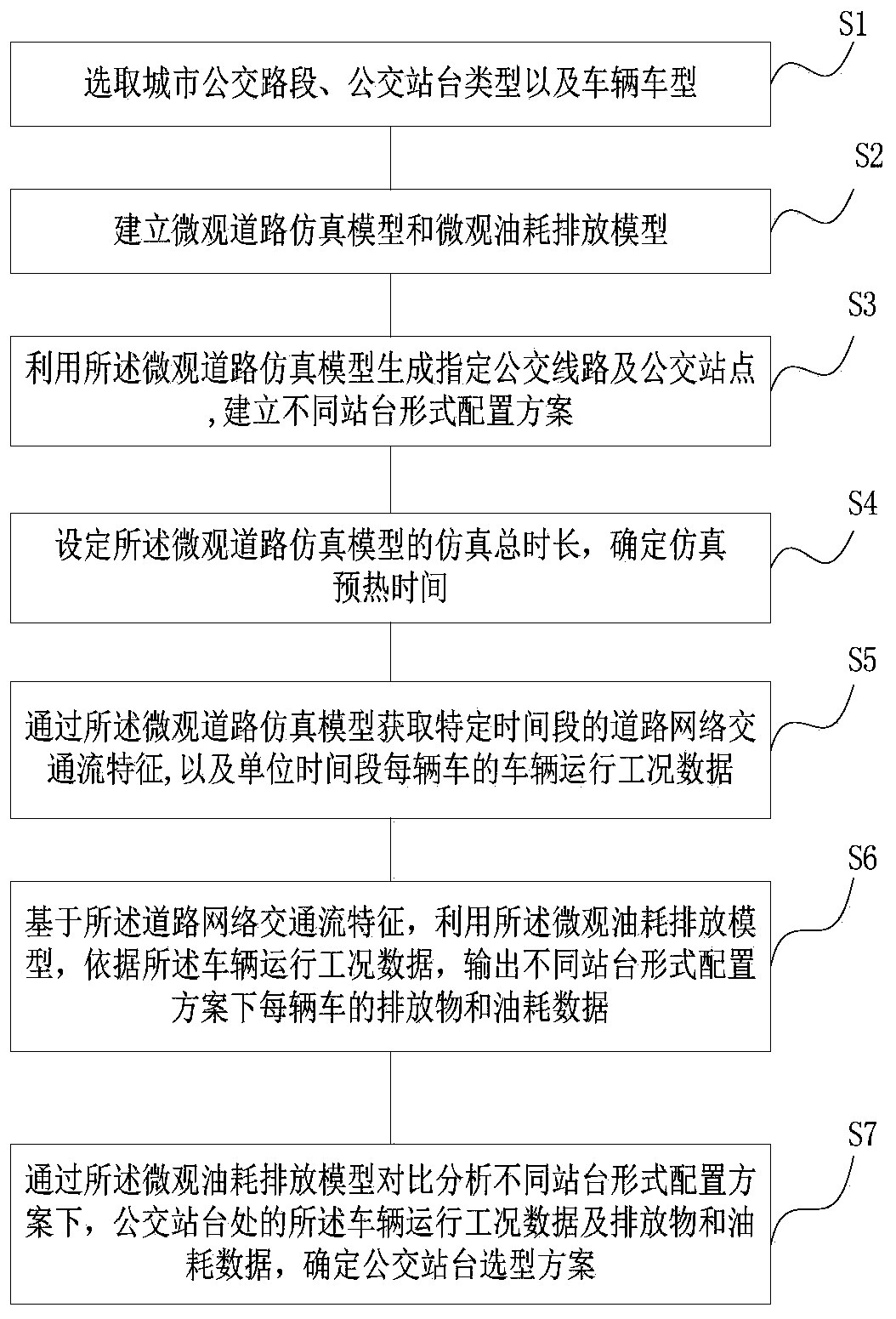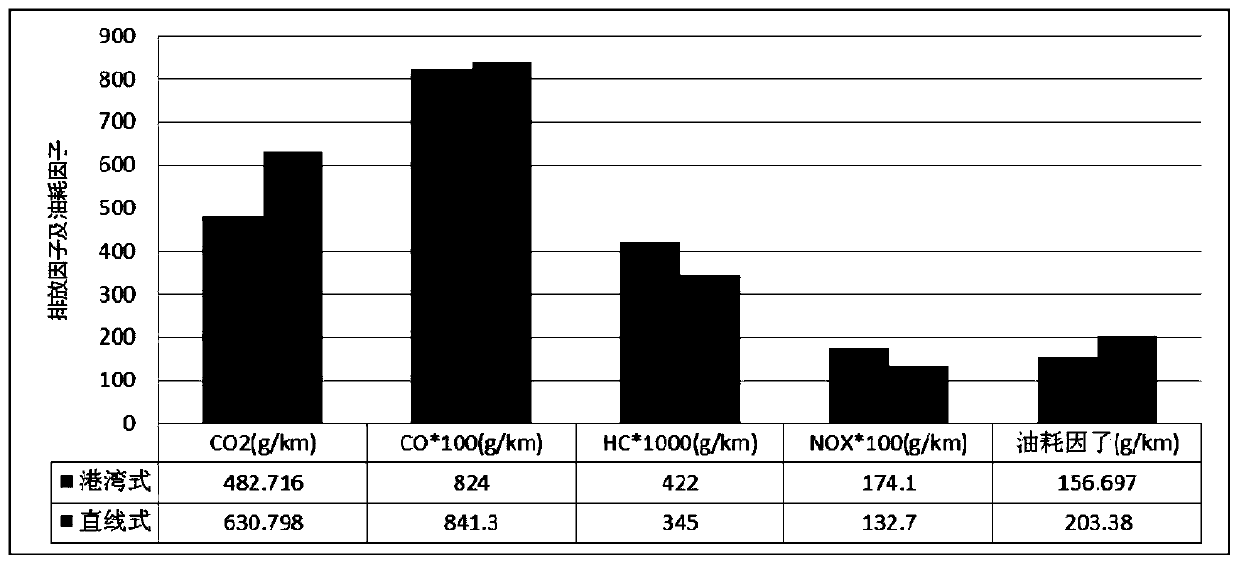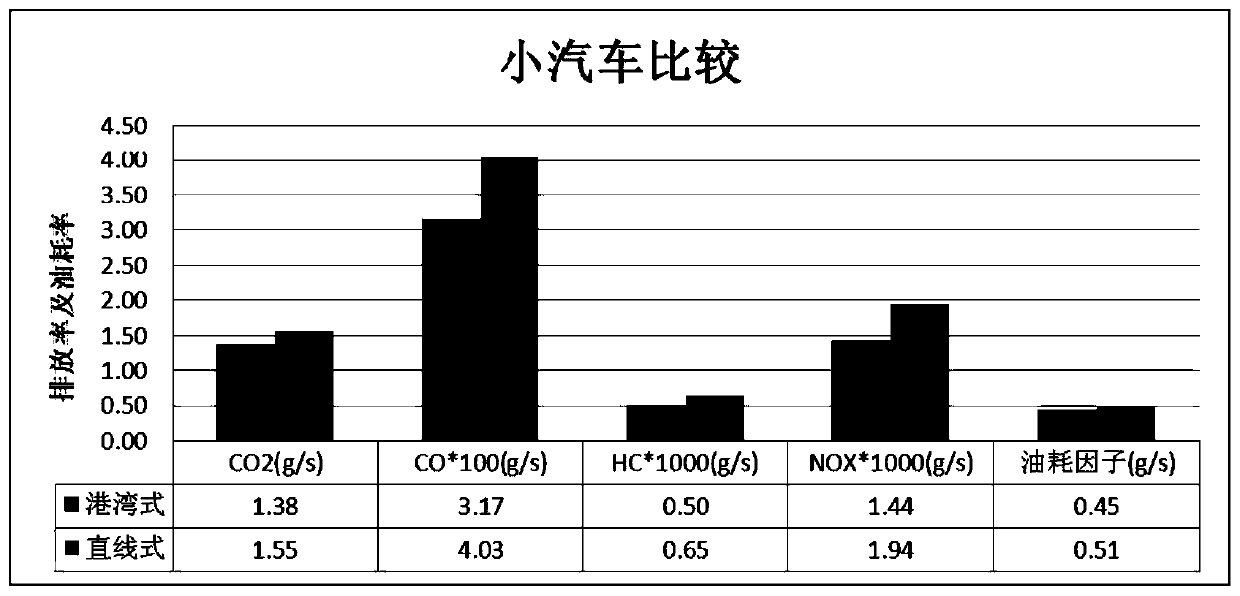Bus station model selection method based on microscopic traffic emission estimation
A technology for bus stops and micro-traffic, which is applied in traffic control systems, traffic flow detection, and traffic control systems for road vehicles. It can solve the problems of less optimization design research, inhalation of a large amount of vehicle exhaust, and congestion, so as to reduce traffic fuel consumption. and exhaust emissions, a good waiting environment, and the effect of improving service levels
- Summary
- Abstract
- Description
- Claims
- Application Information
AI Technical Summary
Problems solved by technology
Method used
Image
Examples
Embodiment
[0028] like figure 1 As shown, the present invention provides a method for bus stop type selection based on micro-traffic emission estimation. The specific steps of the method are as follows:
[0029] S1. Select urban bus sections, bus stop types and vehicle models;
[0030] S2. Establish a microscopic road simulation model and a microscopic fuel consumption emission model;
[0031] S3, using the microcosmic road simulation model to generate designated bus lines and bus stops, and establish configuration schemes for different station forms;
[0032] S4. Setting the total simulation duration of the microscopic road simulation model, and determining the simulation warm-up time;
[0033] S5. Acquiring the traffic flow characteristics of the road network for a specific period of time and the vehicle operating condition data of each vehicle through the microscopic road simulation model;
[0034] The traffic flow characteristics of the road network include traffic flow, car model...
PUM
 Login to View More
Login to View More Abstract
Description
Claims
Application Information
 Login to View More
Login to View More - R&D
- Intellectual Property
- Life Sciences
- Materials
- Tech Scout
- Unparalleled Data Quality
- Higher Quality Content
- 60% Fewer Hallucinations
Browse by: Latest US Patents, China's latest patents, Technical Efficacy Thesaurus, Application Domain, Technology Topic, Popular Technical Reports.
© 2025 PatSnap. All rights reserved.Legal|Privacy policy|Modern Slavery Act Transparency Statement|Sitemap|About US| Contact US: help@patsnap.com



